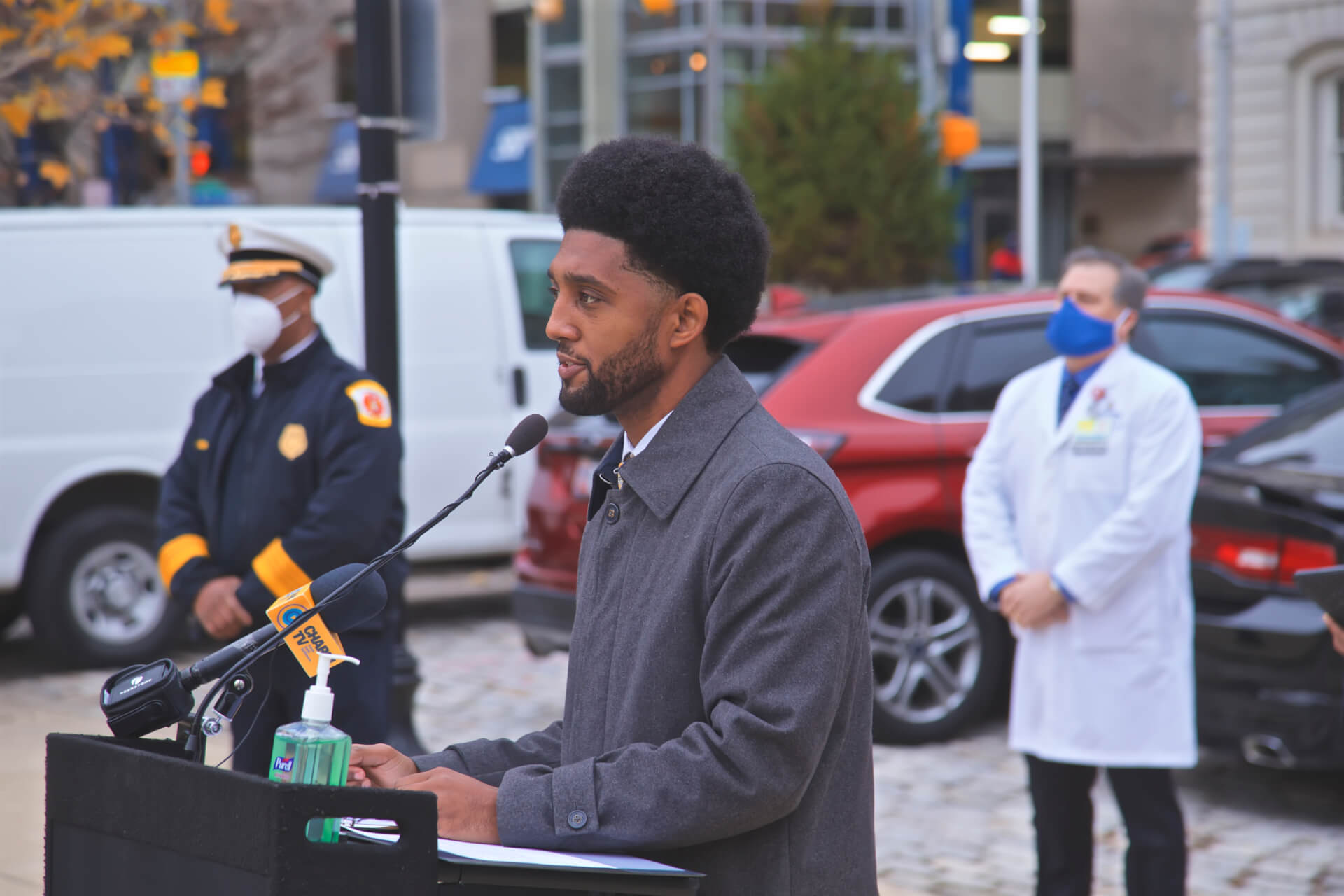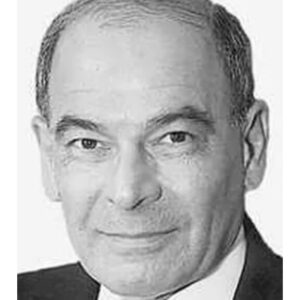Frank DeFilippo: Ages, Backgrounds and Constituencies Separate Hogan and Scott on Policing

Here we go again with the sniping between the governor and the mayor over crime-fighting strategies while the bodies pile up on the streets of Baltimore.
Gov. Larry Hogan (R) pushes for more aggressive enforcement. Mayor Brandon Scott (D) wants more caution and study.
So when the two meet later in the week, they’ll be discussing the obvious: There’s really nothing new about crime that’s not already known. Bad people do bad things to each other and to good people who too often happen to be in the way. Even kids are helpless victims of stray bullets.
Maybe there’s more to it. Maybe everyone’s in on it and nobody wants to talk. And maybe some bad guys work with the cops to stay out of jail by turning on other bad guys. The drug gangs may be successors to yesteryear’s political precinct organizations, contributing to community needs from top to bottom, thus complicity.
If life often imitates art, life on the streets of Baltimore imitates TV cop shows instead of the opposite. The cops know who the bad guys are and where the bad stuff happens. Cops occasionally reverse roles and actually become the bad guys.
Life is cheap on the streets of Baltimore. There have been 108 murders so far this year, as of this writing, well ahead of 99 at the same point last year, and on pace to continue the city’s record of more than 300 murders annually for five — or is it six? — years in a row.
It’s likely a spitball contest neither Hogan nor Scott can win, but it’s a safe wager that Hogan’s on the high side of the public relations duel in which each has a separate audience. Many concerned citizens are fed up and fearful for their lives and property in Baltimore.
The dumbest idea to emerge is the suggestion to establish the National Guard as an occupying force in the city. The last impression the city needs is the appearance of being under siege to criminal gangs and freelance shooters, as it all too often is without brass bands to call attention.
There’s a third party in the mix as well. State’s Attorney Marilyn Mosby has declared, when she’s not busy traveling or buying real estate, that maybe crime in a minor key can be overlooked, punishable by a scold, a threat or even a little TLC.
Her office will no longer prosecute low-level crimes while the cops say they’ll nonetheless continue to make arrests at the lower ranks of the criminal pecking order. Talk about your mixed messages.
Even the criminals must be confused by the current uncertainty of law enforcement, though still enjoying the favorable advantages of escaping capture or serious punishment for their transgressions. In life, as in casinos, you play the percentages.
Though a frequent critic of Baltimore’s law enforcement protocols, Hogan’s latest rankle was provoked by the vicious beating of two Korean women — with a cinder block as a crude but handy weapon — in a West Baltimore liquor store. Hogan’s wife, Yumi, is Korean.
The surveillance camera video went viral, worldwide, injecting the assault into the global outrage over the recent spate of anti-Asian attacks, another smudge on Baltimore. A suspect is in custody.
That brutal attack was preceded a few days earlier by the murder of an Israeli man who was visiting Baltimore for a cousin’s wedding in the Park Heights neighborhood. No suspect is in custody, and the reward money is stacking up, so far to $30,000, while video is on a continuous loop in Israel.
The poet T.S. Eliot observed that democracy swings constantly between tyranny and anarchy. We are in a reactionary time to the stop-and-frisk, mass arrest and incarceration policies of the 90s and the recent string of senseless police killings of mostly unarmed Black men.
“The city needs to do a better job of focusing on crime,” Hogan said. “It seems to be the last thing that they’re focusing on right now, and they need to come up with a real plan.”
Quick as a twitch to respond to Hogan, Scott tweeted back: “How about meeting with me to discuss violent crime, gun trafficking, or restarting the Criminal Justice Coordinating Council. . . .”
Huh?
Lickety-split, meeting arranged for Thursday, May 13, on Hogan’s turf in Annapolis, and will include Police Commissioner Michael S. Harrison.
But the Criminal Justice Coordinating Council? They’re planners, thinkers, delayers — not crimefighters — and another layer of bureaucracy to put off any sensible, reasonable, attack on the crime and criminals that are stalking the streets of Baltimore like a menacing plague.
Gun trafficking? The origins of illicit guns are already known. Maryland has one of the strictest — if not the strictest — gun control laws in the nation, dating back to the 1970s. Ghost guns are homemade weapons without serial numbers whose handicraft can’t be traced. (The Justice Department has proposed background checks as a requirement to purchase ghost gun kits.) And we know that many guns used in the commission of crimes in Baltimore can be traced back to legal purchases in Virginia.
Among the problems are that Hogan and Scott are generations, backgrounds, ideologies and constituencies apart.
Consider their pedigrees: Hogan’s father, Lawrence Hogan Sr., was an FBI agent before veering into elective politics; Scott grew up in one of Baltimore’s tough neighborhoods, near Pimlico.
As a result of the nationwide police killing spree of black men and the accompanying riots and demonstrations, Scott was early to pick up the cheers to defund the police without giving definition to what he or the phrase meant.
Lately he’s defined it to mean reallocating resources to apply equally to police work as well as the appropriate social services that would contribute to detouring away from a life of crime and toward contributing citizenship.
If only.
Put another way, a system of intervention — seems a reasonable interpretation — and a parallel and preferable choice to prison. And, in effect, a parallel system of justice.
So between Mosby’s non-prosecution position and Scott’s “Clockwork Orange” behavior modification approach — and the many legislative attempts to “reform” or weaken Maryland’s criminal justice cannon — all just doesn’t rest very well with Hogan.
Hogan’s double Scott’s age, and certainly has different sensibilities about crime and punishment, though he is far from a law-and-order commando. Besides, calling out the city and its problems plays well in the counties beyond the I-95 corridor.
However, during the recent General Assembly session, Hogan vetoed a package of police reform bills whose centerpiece was the Police Reform and Accountability Act of 2021, which repealed legal protections for officers that had been in effect since the 1970s.
In his veto message, the governor said that reform efforts had been “overtaken by political agendas that do not serve the public safety interests of the citizens of Maryland.” The heavily Democratic legislature overrode Hogan’s veto.
As with many citizens, the governor wants to see some action on the city’s part to reduce and — it’s too much to hope for — stamp out crime.
The Baltimore police have long been working on crime-fighting plans. There have been 10 police commissioners since 1989, including one who served prison time for tax evasion, each with a different scheme to tame Baltimore’s mean streets.
Harrison, the latest commissioner, has been working on a plan since he took command in 2019, mainly under the watchful eye of the Department of Justice.
Among the reforms — the word is used cautiously — adopted by the General Assembly is a Constitutional Amendment that gives voters the choice of returning full control of the Baltimore Police Department to the city for the first time since 1860. The city police department is now a state agency.
Back in the 1970s, Mayor William Donald Schaefer (D) often badgered Gov. Marvin Mandel (D) about turning back the city’s police department — and the authority to appoint the police commissioner (since done) — to the city as a signal that Baltimore was mature enough to handle its own affairs.
Mandel counseled Schaefer that he would honor the request if that’s what the mayor wanted, but “it would be the biggest mistake you’ll ever make.”
Schaefer, puzzled, asked why.
“When there’s a problem, you can always blame the governor,” Mandel replied.
Which is exactly what Scott does.




 Creative Commons Attribution
Creative Commons Attribution